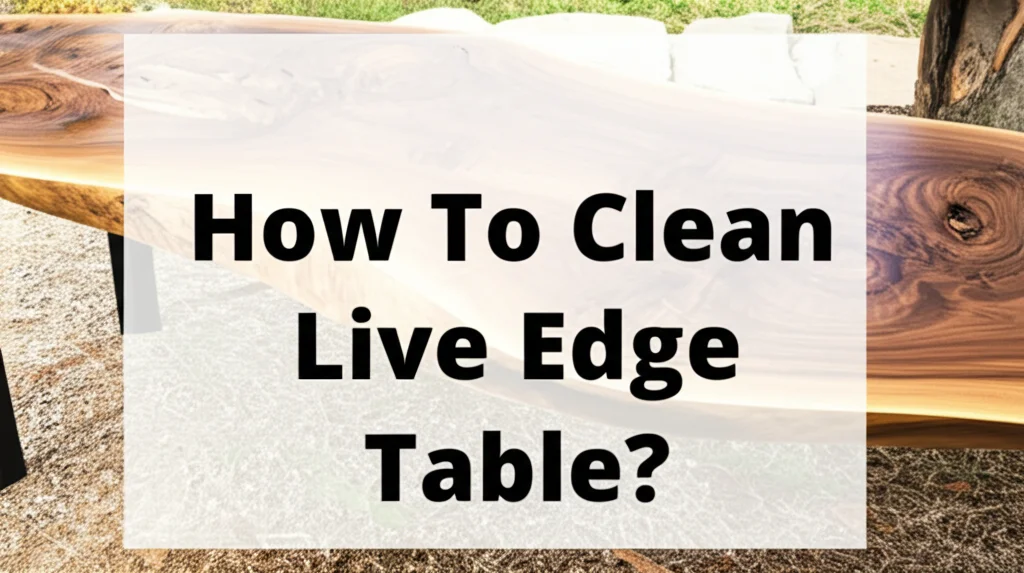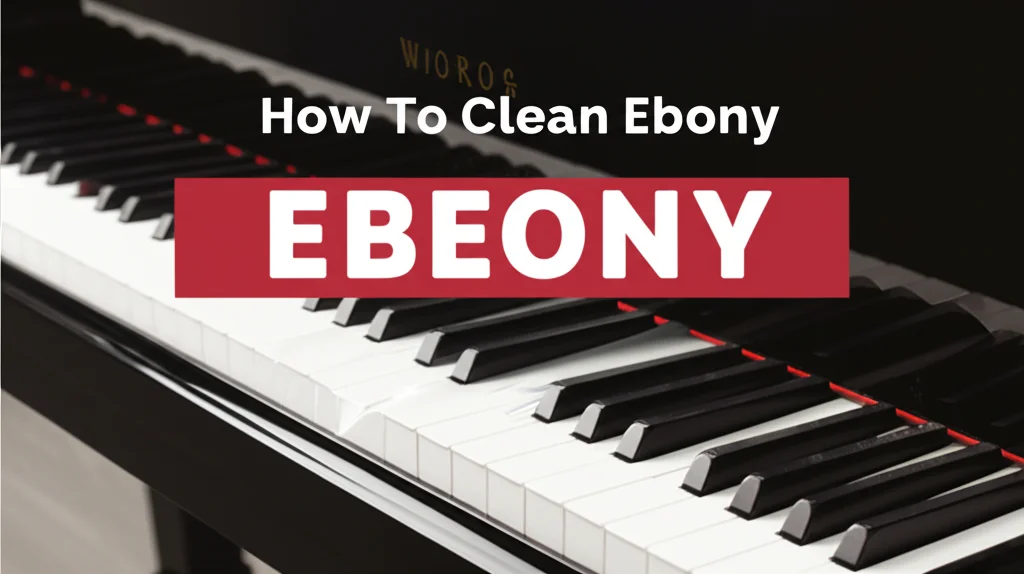· Home Cleaning · 7 min read
How To Clean Live Edge Table?

Keeping the Beauty Alive: How to Clean a Live Edge Table
Have you recently welcomed a stunning live edge table into your home? These tables are unique works of art, showcasing the natural beauty of wood. But keeping that beauty intact requires a little know-how. Cleaning a live edge table isn’t the same as wiping down a plastic surface. This article will guide you through the best practices for cleaning, protecting, and maintaining your live edge table, ensuring it remains a centerpiece for years to come. We’ll cover everything from daily dusting to deep cleaning and oiling, so you can confidently care for your investment.
Takeaway:
- Dust regularly with a soft cloth.
- Use a gentle wood cleaner for spills and messes.
- Re-oil periodically to nourish the wood and prevent drying.
- Protect from heat and moisture to maintain its integrity.
What’s the best way to clean a live edge table?
The best way to clean a live edge table is to dust it regularly with a soft, dry cloth. For spills, use a damp cloth with a gentle wood cleaner, and follow up with a dry cloth. Periodically oiling the table will help maintain its beauty and prevent cracking.
Understanding Your Live Edge Table
Before diving into cleaning, it’s important to understand what a live edge table is. Unlike traditional furniture, a live edge table retains the natural edge of the wood, showcasing its organic shape. This means the wood is often less processed and more susceptible to changes in humidity and temperature. Knowing this helps you choose the right cleaning methods.
Different wood types also require slightly different care. For example, softer woods like pine might need more frequent oiling than hardwoods like maple or oak. Consider the type of finish on your table as well. Is it sealed with polyurethane, varnish, or simply oiled? This will influence the products you can safely use.
Daily & Weekly Maintenance: Dusting & Quick Cleanups
Consistent, gentle maintenance is key to keeping your live edge table looking its best. Dusting is your first line of defense against grime buildup. Use a soft, lint-free cloth – microfiber is ideal – and wipe along the grain of the wood. Avoid abrasive materials that could scratch the surface.
For small spills or messes, act quickly! Blot the spill with a clean, damp cloth. Avoid rubbing, as this can spread the mess and potentially damage the finish. If water is used, immediately dry the area with a separate, clean cloth. A quick cleanup prevents stains and keeps your table looking fresh.
Deep Cleaning Your Live Edge Table
While regular dusting handles most maintenance, your live edge table will benefit from a deeper clean occasionally. This is where choosing the right cleaner is crucial. Avoid harsh chemicals, ammonia-based cleaners, and abrasive scrubbers. These can strip the wood of its natural oils and damage the finish.
Instead, opt for a wood cleaner specifically designed for finished wood surfaces. Alternatively, you can make a gentle cleaning solution by mixing a few drops of mild dish soap with warm water. Dampen a soft cloth with the solution (make sure it’s not soaking wet!) and gently wipe the table surface, following the grain. Immediately dry with a clean cloth.
If you’re looking for alternative cleaning solutions for other surfaces, you might find this article on https://www.beacleaner.com/how-to-clean-luxury-vinyl-plank-flooring/ helpful for maintaining other areas of your home.
The Importance of Oiling Your Live Edge Table
Oiling is arguably the most important part of live edge table maintenance. Wood is a natural material that needs to be nourished to prevent it from drying out, cracking, and warping. Oil penetrates the wood, replenishing its natural oils and protecting it from moisture.
How often should you oil? It depends on the climate and how often the table is used. Generally, oiling 2-4 times a year is a good starting point. To oil, apply a thin, even coat of wood oil (like tung oil, linseed oil, or a specialized wood finish) with a clean cloth. Allow the oil to soak in for the recommended time (check the product instructions), then wipe off any excess.
Protecting Your Table from Damage
Prevention is always better than cure. Here are a few ways to protect your live edge table from damage:
- Heat Protection: Use coasters and placemats to protect the surface from hot dishes and drinks.
- Moisture Control: Avoid placing the table in areas with high humidity. Use a dehumidifier if necessary. Wipe up spills immediately.
- Sunlight Exposure: Prolonged exposure to direct sunlight can fade the wood. Consider using curtains or blinds to filter the light.
- Avoid Abrasives: Never use abrasive cleaners, scrub brushes, or steel wool on your table.
- Consider a Finish: If your table isn’t already finished, applying a protective finish like polyurethane or varnish can provide an extra layer of protection.
If you’re dealing with other flooring issues, like stubborn grout, you might find this article on https://www.beacleaner.com/how-to-clean-floor-grout-without-scrubbing/ useful.
Addressing Specific Issues: Stains & Water Rings
Even with careful maintenance, accidents happen. Here’s how to tackle common issues:
- Water Rings: These can often be removed with a hairdryer on a low setting. Gently heat the ring, moving the hairdryer back and forth. The heat helps to evaporate the trapped moisture.
- Stubborn Stains: For more stubborn stains, try making a paste of baking soda and water. Gently apply the paste to the stain, let it sit for a few minutes, and then wipe it away with a damp cloth.
- Grease Stains: Sprinkle cornstarch on the grease stain and let it sit for several hours to absorb the oil. Vacuum up the cornstarch and then clean the area with a gentle wood cleaner.
FAQ: Live Edge Table Cleaning
Q: Can I use vinegar to clean my live edge table?
A: While vinegar is a great natural cleaner for many surfaces, it’s generally not recommended for live edge tables. The acidity can damage the finish and dry out the wood. Stick to wood cleaners specifically designed for wood furniture.
Q: How do I know if my table needs oiling?
A: A good way to tell is to sprinkle a few drops of water on the surface. If the water beads up, the table is well-oiled. If the water soaks in quickly, it’s time to oil.
Q: What type of cloth should I use for cleaning?
A: Microfiber cloths are ideal because they are soft, lint-free, and won’t scratch the surface. Avoid using paper towels, as they can leave behind lint.
Q: Can I use a steam cleaner on my live edge table?
A: No, steam cleaners are not recommended for live edge tables. The heat and moisture can damage the wood and finish.
Q: Is it okay to use furniture polish on my live edge table?
A: Some furniture polishes contain silicone, which can build up on the wood and prevent it from absorbing oil. If you choose to use furniture polish, make sure it’s specifically designed for oiled wood and doesn’t contain silicone.
Conclusion: Preserving Your Natural Masterpiece
Cleaning a live edge table is a simple process, but it requires a gentle touch and the right products. Regular dusting, prompt spill cleanup, and periodic oiling are the keys to preserving its natural beauty. By following these tips, you can ensure your live edge table remains a stunning and cherished piece of furniture for generations to come. Remember to always prioritize gentle cleaning methods and protect your table from heat, moisture, and harsh chemicals. Investing a little time in proper care will pay off in the long run, keeping your live edge table looking its best. If you’re looking for more cleaning tips for your home, check out this article on https://www.beacleaner.com/how-to-clean-hardwood-floors-with-vinegar/ for guidance on maintaining other wood surfaces.




